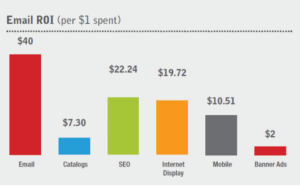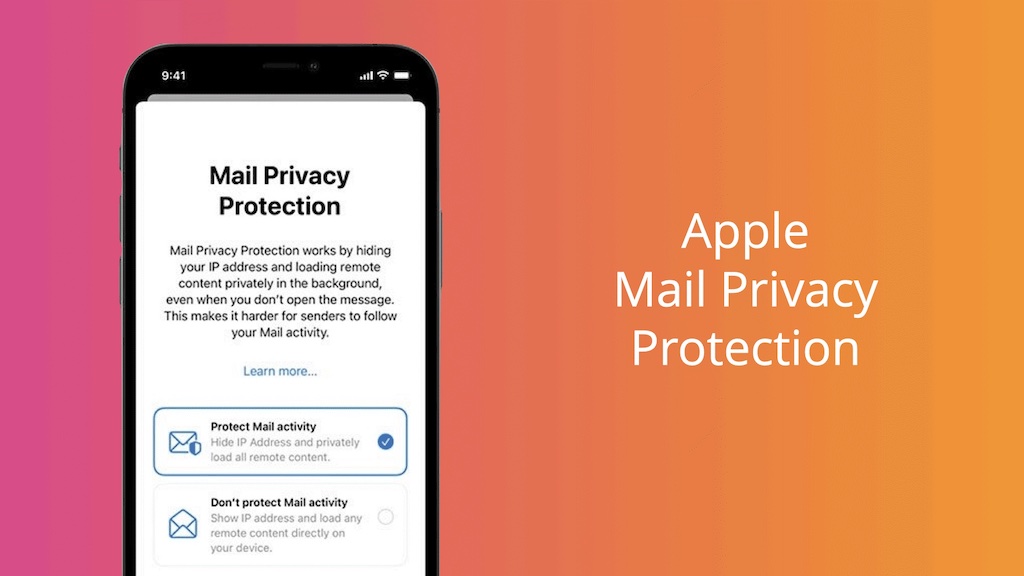With the release of iOS15, Apple has launched Mail Privacy Protection (MPP).
According to Apple, MPP “works by hiding your IP address and loading remote content privately in the background, even when you don’t open the message. This makes it harder for senders to follow your Mail activity.”
This post examines the impact of MPP on Video Email, and the actions we’re taking at Playable to align with MPP.
In summary, Video Email will continue to work wonders for email marketers, and MPP is generally a positive development, and it will bring some changes to Video Email:
- Faster playback and higher video resolution – many email recipients using Apple Mail will enjoy better quality video playback, because the video content will be prefetched on their device. This translates to better engagement and post-click activity.
- Reporting – some reports on Playable will be changed to exclude noise from Apple Mail video Plays, because some percentage of those Plays will be speculative prefetching by Apple Mail.
- Billing – Customers on Essentials, Professional, Performance and Enterprise plans will receive a refund of 50% of videos prefetched by Apple Mail, because we’re in this together! This special offer will continue from iOS15 launch on September 20th, through to the end of November 2021, while the Email Marketing industry adjusts to the many changes wrought by MPP. (Yes that includes your Black Friday & Cyber Monday video email campaigns!)
Email remains the marketing channel that achieves the highest return on investment, and video remains the most engaging content type, and adding video to your email marketing continues to increase email engagement and post-click activity.
We have provided more details and an FAQ below. If you have further questions about Apple Mail Privacy Protection and how it impacts your video email campaigns, please Contact Us, we’d love to hear from you.
All best,
The Playable Team
Email privacy is good because it increases the advantage email enjoys over other channels
Playable fully supports privacy for email recipients including those who enjoy watching video content in their inboxes.
We do love data – and we use lots of data to optimize video email marketing for our customers – but Playable never stores any personally identifiable information (PII) on email recipients, for the same privacy concerns as Apple. Beyond this, Playable also offers our European customers the option to discard IP address data which some interpret as PII under GDPR.
As a consequence of MPP, Playable will exclude videos requested by Apple Mail from the following reports:
- Operating System (OS) – because it will no longer be possible to distinguish between Apple Mail video plays on iOS vs. MacOS
- Location / City – because this is derived from recipient IP address which will be obscured. Region and Country reports will still include video plays by Apple Mail.

Source: Smart Insights
Email is the best performing marketing channel – delivering an ROI of 4,000% – because it’s the last remaining permission-based marketing channel. Recipients ask for information to be sent by email, and that value exchange translates to higher engagement, compared to ads injected into social news feeds without permission.
Adding more respect for recipients through privacy protection increases the advantage that email enjoys over other marketing channels, and Playable is all in favor of that.
Prefetching email content is great because the highest possible quality video content can be delivered for Apple Mail users
Email privacy protection is not entirely new. Gmail and Yahoo Mail have used image proxies for many years to hide the IP address of recipients from marketers, and protect users from revealing their location and device characteristics.
What’s new in Mail Privacy Protection is the potential for Apple to prefetch content – including videos – before it is viewed by the recipient – and this is great news for recipients and for marketers alike.
One of the things that Playable does is optimize the video payload for each recipient at the moment of open, based on network conditions. Someone watching a video email on a device with a strong wifi connection will receive a higher resolution video compared to another viewer on a cellular network connection. This is done so that all viewers see motion video as soon as possible, because that drives engagement and post-click activity.
Playable is able to detect Apple prefetch as a new and special “network condition” which is not constrained by a viewer needing to see the video playback immediately. This allows a higher quality video payload to be delivered to Apple devices. And because the prefetched video will more often be cached on the local device, the video playback experience (if/when that happens) will begin more quickly, will be higher quality, will drive higher engagement, more clicks, and more post-click activity.
In this way, prefetching of video brings benefits to both the viewer and the marketer, at the expense of Apple which has to operate data centers that do the extra prefetching work, and the expense of Playable which has to deliver some videos that will not be viewed by the recipient.
I have a personal attachment to prefetching, after starting a company last decade that focussed on using machine learning to prefetch relevant video content when storage and networking conditions are favorable. It’s fantastic to see Apple catching up to that!
Email marketers shifting focus to downstream metrics is also great news
Another consequence of prefetching is that it adds noise to the reporting of Opens and derived metrics (e.g. CTOR) and features (e.g. subject line or send time optimization), because not all content requested by Apple servers will actually be seen by a real person.
Playable will remove this noise from its reporting by excluding videos requested by Apple Mail from the following reports:
- Dwell time. This report will now be based on a smaller sample of data, but will still be useful to marketers to understand how their audience is engaging with their video emails.
This means that marketers will need to measure success using downstream metrics instead, such as click rates, or post-click conversion metrics – session duration or basket and checkout values.
This is more good news for marketers who use video in their email campaigns. Adding video can increase the quantity of clicks from an email campaign, however more significant is the higher quality of clicks resulting from video content in an email.
Clicks from recipients who have seen a video in your email are much better qualified because the video has informed and engaged far better than any static image can. According to Comscore, retail site visitors who view video are 64% more likely to purchase than other site visitors.
Consequently, the significant impact of video email occurs downstream, and a shift in focus to downstream metrics due to upstream noise is aligned to that and we welcome it.
Special Offer – Coming To Terms With MPP
Playable will incur increased costs due to some Apple Mail videos being prefetched and not watched by anyone. Despite that, Playable is supportive of Mail Privacy Protection for the reasons discussed above.
We also understand that our customers will incur additional costs due to MPP, including the time and effort required to adjust the opens-based optimization features of their email platform, to update engagement segments based on downstream signals, and to change reporting processes.
So we’re in this together. Consequently, we are extending a special “Coming To Terms With MPP” offer to customers on our Essentials, Professional, Performance and Enterprise plans. Plays on devices with Apple Mail Privacy Protection are discounted by 50% to adjust for machine opens, which occur when a video is pre-fetched by Apple devices for some recipients, and is delivered by Playable, yet the email remains unopened.
This adjustment of Billable Plays will be shown on your Video Reporting pages:

We believe this strikes a fair balance between .
Playable will be monitoring the roll-out of MPP carefully, and if other industry best practices emerge to handle the reporting and billing of Apple Mail prefetching, we will align with those too.
Frequently Asked Questions
Does Apple Mail Privacy Protection create load spikes?
Apple appears to be using multiple signals on a device (battery level, network conditions, storage, inbox activity) to decide if and when to prefetch content, which will naturally spread out the load. Based on what we’ve observed so far, MPP will not cause significant load spikes at the moment of campaign send, for videos delivered by Playable or any other content in your emails.
Playable uses Google and Amazon infrastructure to deliver videos at massive scale into email campaigns at the moment of open. That infrastructure has been designed to be extremely elastic and will handle the changes in load resulting from MPP.
Will there be bugs and surprises in the rollout of Apple Mail Privacy Protection?
Yes, Apple has already suffered from issues and it’s expected these will continue for a while. During August 2021 we have observed Apple testing the MPP feature and also having problems with it. For example, we’ve observed Apple servers making 200,000 repeated requests for one video delivered to one recipient. We’ve also observed Apple servers making byte range requests to retrieve video content 1 single byte at a time, worthy of a 416 or 418 response perhaps. You might see similar teething issues reflected in the reports of your email platform.
When are videos prefetched?
Great question! Who should decide when and what to prefetch – the user, the device, the app, or the network? With MPP, Apple is asking the user to decide if prefetch is wanted for privacy benefits, yet does not quantify the energy costs (battery drain for mobile devices) and monetary costs (data allowance) to users. Based on our testing at Playable, Apple appears to have adopted a policy whereby prefetch only occurs when a mobile device is plugged in and connected to WiFi, perhaps to minimize the cost for users. But it’s not clear if Apple might modify that policy in the future, or let users set their own policy based on their energy and data constraints.

